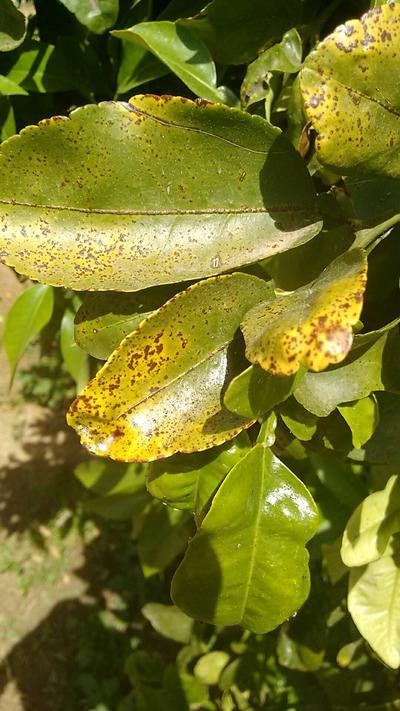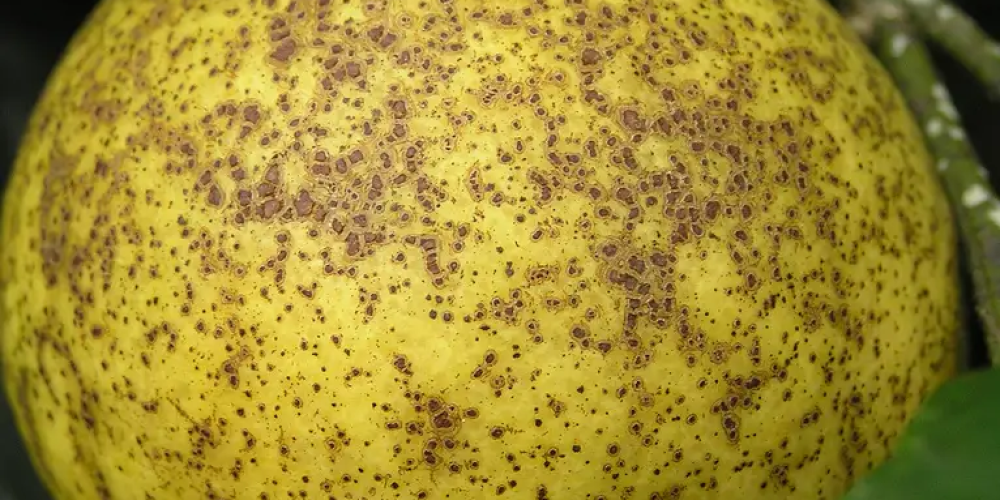Disease name: Lemon melanosis
The scientific name:Diaporthe citri
Type of disease: fungal
Disease family: Diaportaceae
(Lemon fruits infected with melanosis fungus)
- The causes of disease:
Melanos fungi live on dead branches on trees, on the soil, or in the orchard. The severity of the infection is determined by the amount of fungal growth on the lemon plant and the presence of conditions that help and stimulate the fungus to reproduce.
- Symptoms of the disease:
Symptoms of the disease appear on the leaves, which become rough due to brown pustules surrounded by a yellow halo. Small brown to black spots or pustules appear on the infected fruits, accompanied by brown to red gummy secretions. The size of the pimples varies depending on the stage of fruit growth and the time of infection, and when the severity of the infection increases. The leaves become deformed, the branches show symptoms of tip death, the size of the leaves decreases, and the fungus also causes rot to the end of the fruit tip.
- Disease development cycle:
The fungus is formed by black, oval-shaped conidia containing conidia of the alpha-conidia type (single-celled, transparent, bi-nucleated spores) and beta-conidia (filamentous, hook-shaped spores). The fungus is formed in large numbers and is transmitted through the air over long distances.

(lemon leaves infected with melanosis fungus)
- Conditions suitable for the spread of the disease:
Melanosis infection occurs when there is a large amount of fungi on dead branches or wet branches for a long period of time, more than twenty-four hours, due to rain or overhead irrigation with the presence of fungal inoculum on dead branches, which leads to the spread of the infection within temperatures (20-24) Celsius.
- Losses resulting from the spread of the disease:
Severe infection with the melanosis fungus leads to the death of young shoots, and the fruits fall prematurely due to rot that is transmitted to them through the stem, causing huge economic losses in the field.
- Control:
- Pruning dead and diseased branches and twigs.
- Spraying with copper fungicides, especially after fruit set.
- Spraying a fungicide containing pyraclostrobin or strobilurin.
- preventive measures:
- Constantly removing dead branches from the field.
- Continuous tree pruning.
- Balanced fertilization helps the plant fight diseases.
- Sterilize agricultural tools before use.
- Continuously monitor the field for early detection of infection.



